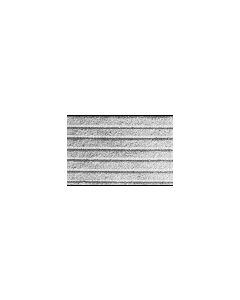Araldite 502
Zusammensetzung nach Luft. Polimerisiert über Nacht. Die Blöcke können am nächsten Tag geschnitten werden. J. Biochem. Biophy. Cytol. 9, 409 (1961)
Produktdetails
Beschreibung
Introduction
Araldite 502 is an epoxy resin embedding medium which yields a light gold color block. Tissues to be embedded in Araldite 502 can be dehydrated with most commonly used organic solvents. However the application of a transitional solvent, such as propylene oxide, is advisable because epoxy resins are more soluble in propylene oxide.
RecommendedProcedure
Fixation: Tissues can be fixed in a wide range of fixatives. One of the most commonly used fixatives is an alde-hyde (i.e.: glutaraldehyde) followed by osmium tetroxide.
Dehydration: There are many different dehydration schedules that can be followed. A typical one is as follows:
- 70% Ethanol for 10 minutes
- 100% Ethanol for 10 minutes
- 100% Ethanol for 15 minutes
- 100% Propylene Oxide for 15 minutes
- 100% Propylene Oxide for 15 minutes
**NOTE: Longer times may be required for some samples.
Mixing Instructions:
- Araldite 502: 20 ml
- DDSA: 22 ml
- DMP-30: 0.63-0.84 ml*
- (or BDMA: 1-1.2 ml)
(FOR LARGER BATCHES INCREASE EACH COMPONENT PROPORTIONALLY)
*For better penetration and stability BDMA is recommended in place of the DMP-30.
Slight variations of the accelerator (DMP-30 or BDMA) will drastically affect the color and brittleness of the block.
Prior to measuring and mixing the resin and the anhydride should be warmed (60°C) to reduce their viscosity. Thorough mixing is imperative to be able to achieve uniform blocks. The final block, can be made harder by replacing some of the DDSA with NMA (0.5ml of NMA for each 1.0ml of DDSA).
Although the mixture can be stored for up to 6 months at 4°C it is highly recommended that freshly prepared embedding medium always be used. If you choose to store the mixture you should warm it thoroughly prior to adding the accelerator.
Infiltration: It is recommended that for all of the infiltration steps a specimen rotator be used.
Drain the tissue of most of the propylene oxide, leaving a little so the tissue does not dry out.Replace the solvent with a 1:1 solution of propylene oxide:embedding medium and allow it to stand for at least 1 hour at room temperature. Remove the mixture, replace it with 100% embedding medium and leave for 6-12 hours at room temperature.
Embedding: This may be done in EMS embedding capsules ( EMS Catalog #70020) or a flat embedding mold ( EMS Catalog #70900).
Transfer each sample to a dry capsule or mold and fill the mold with embedding medium. Cure the medium overnight in an oven at 60°C. Better sectioning properties of certain samples may be achie-ved if a time of 24-48 hours in the oven is used.
Blocks can be trimmed and sectioned after the blocks return to room temperature.
References:
Finck, H. (1960), J. Biophys. Biochem. Cytol. 7, 27-30.Luft, J.H.(1961), J. Biophys. Biochem. Cytol. 9, 409-414.Glauert, A.(1991), Microscopy and Analysis, September; 15-20
Weitere Informationen
| Anwendung |
Einbettung
|
|---|---|
| Basis |
Epoxy
|
| Gebotszeichen |
Augenschutz benutzen

Handschutz benutzen

|
| Signalwort |
Gefahr
|
| Symbol GHS |
GHS07

GHS08

GHS09

|
| Bestandteile | 450ml Araldite 502, 450ml DDSA, 50ml DMP-30 |
| Versandklasse |
Gefahrgut LQ
|
| Arbeitsbereich |
Elektronenmikroskopie
|
| SDB (mehrsprachig) | E10900 |
| SDB (mehrsprachig) | E13710 |
| SDB (mehrsprachig) | E13600 |
| SDB (mehrsprachig) | E13600 |











